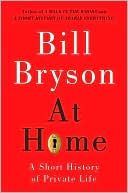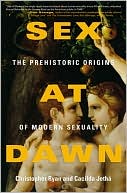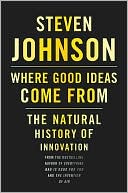Clean: A History of Personal Hygiene and Purity
In this pioneering book, Virginia Smith combines archeology, psychology, biology, and sociology to reveal how and why standards of cleanliness have come to exist today. Using hundreds of first-hand accounts and sources, Smith bring us from the Neolithic age to the present, peppering her engaging prose with enlightening and often surprising details.\ Subconscious cleanliness has been with us since the first cell ejected a foreign invader. Even at the earliest stages of human development, our...
Search in google:
In this pioneering book, Virginia Smith combines archeology, psychology, biology, and sociology to reveal how and why standards of cleanliness have come to exist today. Using hundreds of first-hand accounts and sources, Smith bring us from the Neolithic age to the present, peppering her engaging prose with enlightening and often surprising details.Subconscious cleanliness has been with us since the first cell ejected a foreign invader. Even at the earliest stages of human development, our bodies produced pleasure-giving chemical opiates when things smelled or felt clean, inducing us to do things like bathing and removing dirty clothes. The need to be clean led directly to socialization, as we turned to our fellows for help with those hard to reach spots. In Eurasia during the Bronze Age, an emerging hierarchy of wealthy elites turned their love of grooming into an explosion of the cosmetic and luxury goods industry, greatly effecting the culture and economy of a vast area and leading to advances in chemistry and medicine. The history that follows, from Greece and Rome, where citizens focused much of their leisure time on perfecting, bathing, or just writing about the model athletic body, through Europe in the middle ages and the following centuries, is full of intriguing customs, convoluted treatises, and many reversals. Baths were good for you, baths were bad for you, baths were good again—but only if they were quite cold. Even the enlightened medical knowledge of modern times could not stop an onslaught of health remedies, treatments, spas, and New Age nature cures that were to follow. While today we are immeasurably closer—perhaps too close—to knowing just what "clean" means to our bodies, we are still just as far as we ever were on agreeing what it means to our souls. This engrossing and highly original work will introduce you to the customs and ideas of a myriad of cultures from centuries of human history. Not only will you gain a new perspective on the wonderful diversity of the world, but you'll never look at your toothbrush the same way again. Publishers Weekly Smith, a British historian and honorary fellow at the Centre for History in Public Health at the London School of Hygiene, traces the origins of our modern standards of cleanliness by reaching back to the ancient Mesopotamians to look at the kind of grooming we now call "pampering": baths, manicures and hairstyling. She argues that the impulse toward maintaining a cleanly outward appearance, which plays a central role in sexual attraction, is opposed by a psychological or religious desire for "inner" purity linked to Christian asceticism, which disdained physical adornment. Thanks to the development of "an ethos of sanitary need" in the Victorian era, which linked cleanliness to purity, personal hygiene has now reached the stage of "general consensus," with newly emerging middle classes around the world eager to buy hygienic and cosmetic products to meet Western standards of appearance. Smith's chronicle is sprinkled with interesting details and draws on a broad cultural canvas, but the tone is academic; general readers will prefer to await a more popular history. 25 illus. (July)Copyright 2007 Reed Business Information
List of Illustrations xiIntroduction 1Bio-physicality 8The Cosmetic Toilette 45Greek Hygiene 74Roman Baths 102Asceticism 126Medieval Morals 144Protestant Regimens 185Civil Cleanliness 224Health Crusaders 264The Body Beautiful 307Notes 353Select Bibliography 433Acknowledgements of Sources 437Index 439
\ Publishers WeeklySmith, a British historian and honorary fellow at the Centre for History in Public Health at the London School of Hygiene, traces the origins of our modern standards of cleanliness by reaching back to the ancient Mesopotamians to look at the kind of grooming we now call "pampering": baths, manicures and hairstyling. She argues that the impulse toward maintaining a cleanly outward appearance, which plays a central role in sexual attraction, is opposed by a psychological or religious desire for "inner" purity linked to Christian asceticism, which disdained physical adornment. Thanks to the development of "an ethos of sanitary need" in the Victorian era, which linked cleanliness to purity, personal hygiene has now reached the stage of "general consensus," with newly emerging middle classes around the world eager to buy hygienic and cosmetic products to meet Western standards of appearance. Smith's chronicle is sprinkled with interesting details and draws on a broad cultural canvas, but the tone is academic; general readers will prefer to await a more popular history. 25 illus. (July)\ Copyright 2007 Reed Business Information\ \ \ \ \ Library JournalThis smart and witty tour of the quest for clean body (and spirit) begins with the practical neolithic age and runs through the advent of metrosexual preening. As a protégé of the late Roy Porter, health's greatest historian, Smith has impeccable qualifications. Her relative fixation on elite (and sometimes fringe) programs for hygiene and their trickle-down impact on the masses reflects a problem with cultural and social history generally: the sources from ordinary individuals, often nonliterary to begin with, are not preserved as often as those of the privileged. Even so, Smith might have given more and earlier attention to working and poor people. In addition, the narrative favors European and specifically British phenomena; Americans get credit (along with the French) for developing the mass market in cosmetics but not for creating flawed but vital public regulators such as the USDA, FDA and EPA, which have served as models for more practical agencies and oversight in Europe. But Smith's keener interest is the individual's (rather than society's) quest for physical perfection, and almost any reader of Cleanwill come away more aware of the pervasiveness of body-beautiful ideology in contemporary life and commerce. The book is recommended, especially for academic libraries.\ —Scott H. Silverman\ \ \








